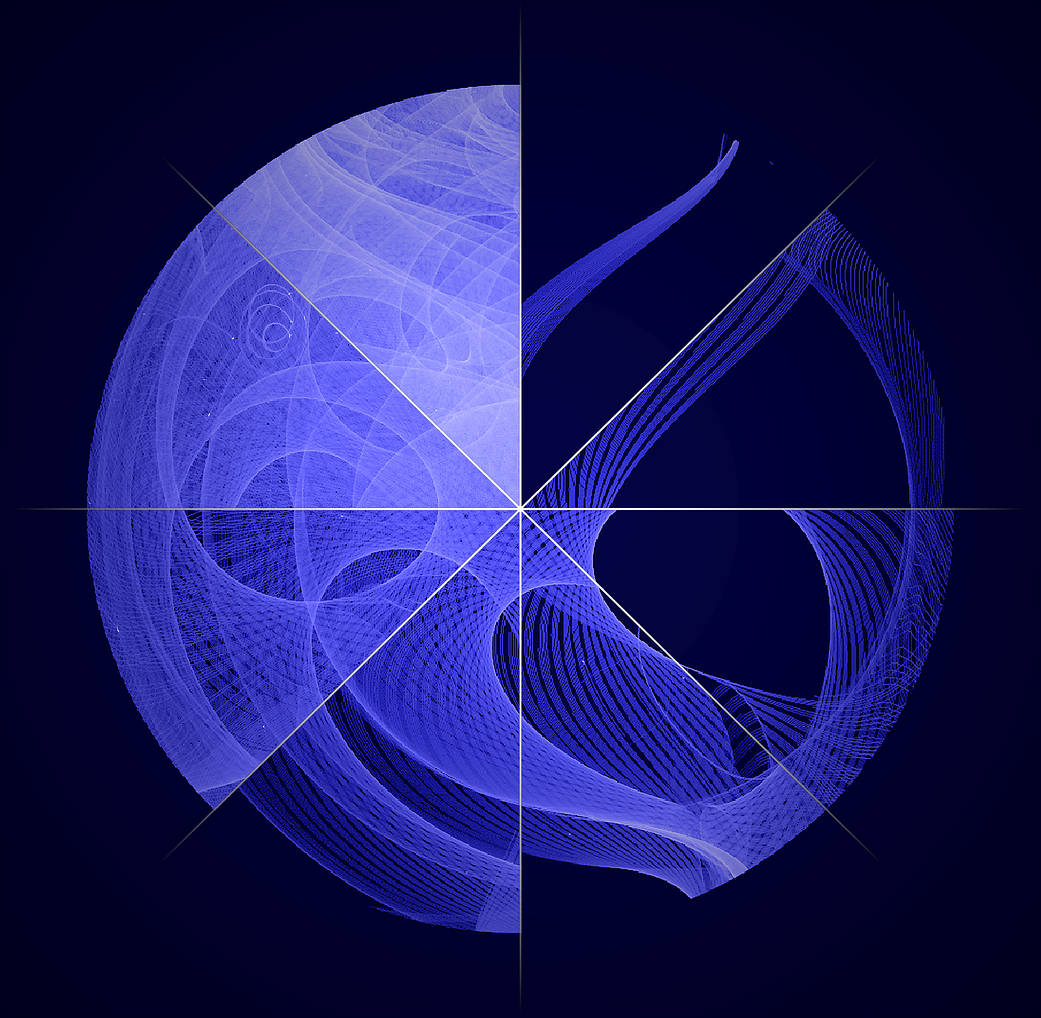What does this Fermi Gamma-ray Space Telescope Spirograph have in common with Women’s Equality Day?
The Fermi mission is run by Project Scientist Dr. Elizabeth Hays, one of many female scientists and leaders at NASA. Hays and her deputy, Dr. Judith Racusin, are astrophysicists in the Astrophysics Science Division of NASA’s Goddard Space Flight Center in Greenbelt, Maryland. They provide scientific guidance and interface with scientist, engineers, and the public. Also part of the Fermi team are Mission Director Beth Pumphrey, and the Gamma-ray Burst monitor Principle Investigator, Dr. Colleen Wilson-Hodge.
NASA has been at the forefront of women in STEM (science, technology engineering and math) since the agency’s beginnings. Our fiirst Chief Scientist was Dr. Nancy Grace Roman (who now has a telescope named in her honor). NASA’s headquarters in Washington, DC is being renamed for one of our legendary ‘hdden figures’ mathematician Mary W. Jackson, NASA’s first African-American female engineer. For more than 60 years, the agency has recognised the talents and contributions of women. On this, the 100th anniversary of Women’s Equality Day, we’re celebrating the many contributions of women in the sciences. Watch the celebration on NASA TV, Aug. 26 at 3 p.m. ET.
This image show how NASA’s Fermi Gamma-ray Space Telescope as it orbits our planet every 95 minutes, builds increasingly deeper views of the universe with every circuit. The image compresses eight individual frames, from a movie showing 51 months of position and exposure data by Fermi’s Large Area Telescope (LAT), into a single snapshot. The pattern reflects numerous motions of the spacecraft, including its orbit around Earth, the precession of its orbital plane, the manner in which the LAT nods north and south on alternate orbits, and more.
This represents the position and exposure for one particular source, the Vela Pulsar. The image is from the perspective of the LAT so that viewers can imagine themselves as the telescope watching the sky and seeing this source flying in and out your view over time.
Image Credit: NASA/DOE/Fermi LAT Collaboration
费米伽马射线太空望远镜旋光仪与妇女平等日有什么共同点?
费米任务由项目科学家伊丽莎白·海斯(Elizabeth Hays)博士负责,她是美国宇航局众多女性科学家和领导人之一。海斯和她的副手朱迪丝·拉库辛(Judith Racusin)博士是马里兰州格林贝尔特NASA戈达德太空飞行中心天体物理科学部的天体物理学家。它们为科学家、工程师和公众提供科学指导和接口。费米团队的成员还包括任务负责人贝丝·帕弗里(Beth Pumphrey)和伽马射线暴监测仪首席研究员科琳·威尔逊·霍奇(Colleen Wilson-Hodge)。
自NASA成立以来,它一直走在女性在STEM(科学、技术工程和数学)领域的前列。我们的第一个首席科学家是南希·格雷斯·罗曼(Nancy Grace Roman)博士(她现在有一个望远镜以她的名字命名)。NASA位于华盛顿特区的总部将以我们传奇的“隐藏人物”数学家玛丽·W·杰克逊(Mary W. Jackson)的名字重新命名。玛丽·W·杰克逊是NASA首位非裔女性工程师。60多年来,该机构一直认可女性的才华和贡献。值此妇女平等日100周年之际,我们庆祝女性在科学领域做出的诸多贡献。美国东部时间8月26日下午3点,请在NASA电视上观看庆祝活动。
这张图片显示了NASA的费米伽马射线太空望远镜每隔95分钟围绕我们的星球运行一周,它利用每条环路建立越来越深的宇宙视图。这张照片是由费米大面积望远镜(LAT)拍摄的51个月的位置和曝光数据压缩成一张快照。这个图案反映了航天器的许多运动,包括它绕地球的轨道、轨道平面的进动、LAT在交替轨道上南北点的方式等等。
这是船帆座脉冲星的位置和曝光情况。这幅图像是从LAT的角度出发的,所以观众可以想象自己是望远镜,看着天空,看着光源随着时间的推移飞进飞出你的视野。
影像来源:NASA/DOE/Fermi LAT Collaboration







